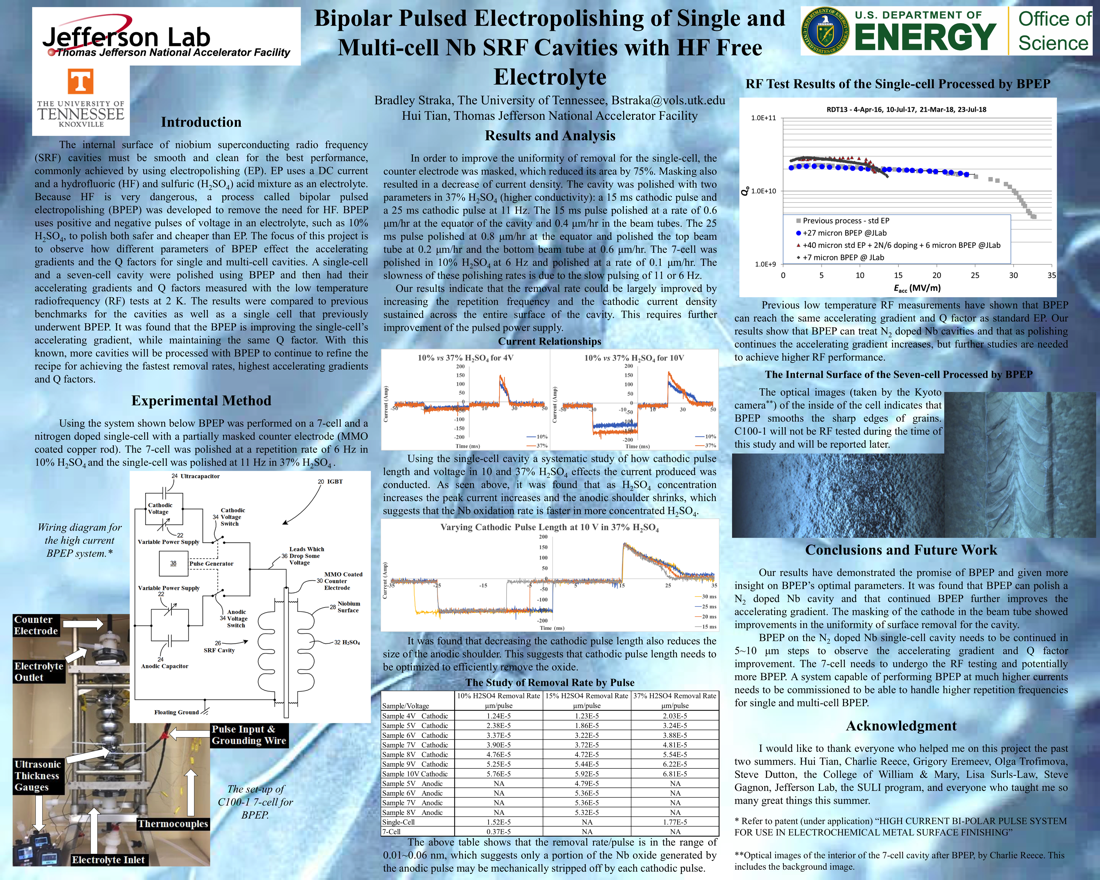Undergraduate Research at Jefferson Lab
Bipolar Pulsed Electropolishing of Single and Multi-cell Nb SRF Cavities With HF Free Electrolyte
Student: Bradley Straka
School: University of Tennessee, Knoxville
Mentored By: Hui Tian
The internal surface of niobium superconducting radio frequency (SRF) cavities must be smooth and clean for the best performance, commonly achieved by using electropolishing (EP). EP uses a DC current and a hydrofluoric (HF) and sulfuric (H2SO4) acid mixture as an electrolyte. Because HF is very dangerous, a process called bipolar pulsed electropolishing (BPEP) was developed to remove the need for HF. BPEP uses positive and negative pulses of voltage in an electrolyte, such as 10% H2SO4, to polish both safer and cheaper than EP. The focus of this project is to observe how different parameters of BPEP effect the accelerating gradients and the Q factors for single and multi-cell cavities. A single-cell and a seven-cell cavity were polished using BPEP and then had their accelerating gradients and Q factors measured with the low temperature radiofrequency (RF) tests at 2 K. The results were compared to previous benchmarks for the cavities as well as a single cell that previously underwent BPEP. It was found that the BPEP is improving the single-cell's accelerating gradient, while maintaining the same Q factor. With this known, more cavities will be processed with BPEP to continue to refine the recipe for achieving the fastest removal rates, highest accelerating gradients and Q factors.

Citation and linking information
For questions about this page, please contact Education Web Administrator.
